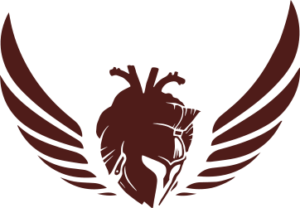If the police arrest you and you are in possession of drugs, it is likely that you will be arrested. The drugs found are confiscated and destroyed. These differences between drugs can be confusing, but the U.S. government has made efforts to classify drugs to clarify differences between their specific risks and benefits. Dissociative drug used as an anesthetic in veterinary practice. Dissociative drugs are hallucinogens that make the user feel detached from reality. For more information, see the Research Report on Hallucinogens and Dissociative Drugs Whenever illicit drugs are mentioned, opium is probably the first thing that comes to mind. Opium use dates back to old age. The first form of opium used in the United States of America was dried opium juice. This juice was extracted from the opium poppy and had gained popularity in the 19th century. In addition, opium was freely prescribed by doctors during this period and was widely available in grocery stores. “Temporary drug prohibition orders” apply to psychoactive substances (sometimes mistakenly called legal highs).
Nicotine, alcohol, caffeine and “poppers” or alkyl nitrites are not classified as psychoactive substances. Drugs as defined in the Human Use Drugs Regulations, 2012 and drugs controlled by the Misuse of Drugs Act (1971) are not considered psychoactive substances. Most of the drugs prohibited today were used either as medication or as recreational products. However, because of their negative effects, governments have had to ban them. So we have illegal drugs that were legal before. In 2007 and 2008, cocaine was used by approximately 16 to 17 million people worldwide, a number similar to the number of opiate users worldwide. North America accounted for more than 40 per cent of global cocaine consumption (the total was estimated at about 470 tons), while the 27 countries of the European Union and four countries of the European Free Trade Association accounted for more than a quarter of total consumption. These two regions account for more than 80 per cent of the total value of the global cocaine market, estimated at $88 billion in 2008. Cocaine is another illegal drug that was legal. Some of the most famous people of the 20th century were known as cocaine users. History teaches us that cocaine has been used for over 3,000 years.
However, the modern history of cocaine spans from the 1860s to the present day. Essentially, cocaine is available in many forms. Initially, it was prescribed to treat morphine dependence and depression. Early versions of Coca-Cola also contained cocaine. Shocking, isn`t it? This is another shock for this list. Methamphetamine was developed in 1893 by a Japanese chemist and approved by the U.S. Food and Drug Administration to treat certain conditions. These included: • Mild depression • Alcoholism • Narcolepsy • Seasonal allergies This legal condition was repealed when the drug became a commonly used drug in 1970. A law – the Controlled Substances Act – was passed to severely restrict methamphetamine use. As the DEA explains, Schedule V drugs have the lowest potential for abuse, while Schedule I drugs have the highest potential for abuse and dependence.
A drug is a substance that affects the functioning of the body. When a drug is classified as “illegal”, it means that it is prohibited by law. Different illicit drugs have different effects on people and these effects are influenced by many factors. This makes them unpredictable and dangerous, especially for young people. A tea made in the Amazon from a plant (Psychotria viridis) that contains the hallucinogen DMT, as well as another vine (Banisteriopsis caapi) that contains an MAO inhibitor that prevents the natural breakdown of DMT in the digestive system, thereby increasing serotonergic activity. It has always been used in Amazonian religious and healing rituals. For more information, please refer to the Research Report on Hallucinogens and Dissociative Drugs. Most illicit drugs are also controlled substances in the United States, but not all controlled substances are considered illegal.
Even legal drugs have the potential for abuse and dependence, so it is necessary for a person to understand that all drugs, legal and illegal, can be dangerous if abused. If a person has doubts about whether a medication is safe or not, they should consult their doctor before taking the medication. This is another illegal drug that was legal. Peyote is a type of cactus that produces a hallucinogenic chemical called mescaline. For thousands of years, the chemical has been used by indigenous communities in their religious ceremonies. From 1920 to 1930, peyote was banned and several laws were passed to prohibit its use and possession. If you are suspected of supplying drugs, you will likely be charged. The amount of drugs found on you and whether you have a criminal record will be taken into account when deciding on a penalty.
Pregnancy: miscarriage, low birth weight, neonatal abstinence syndrome. Older adults: higher risk of accidental abuse because many seniors have multiple prescriptions, which increases the risk of drug interactions and slows medication degradation with age; Many older adults are also treated with prescription medications for pain. The 2012 National Survey on Drug Use and Health reports that in the month prior to the survey, nearly 24 million Americans aged 12 or older, or 9.2 percent of that population, were currently illicit drug users. Of these, nearly seven million reported abusing prescription drugs. These include drugs such as methamphetamine, which were made from prescription drugs. These figures suggest that many types of drugs, both legal and illegal, are regularly used in the United States. It`s important to realize that drug use can lead to many other problems that can affect your health, relationships with family and friends, financial well-being, and where you live. Drug trafficking is a global illicit trade that involves the cultivation, manufacture, distribution and sale of substances subject to drug prohibition laws.
UNODC continuously monitors and studies global illicit drug markets in order to better understand their dynamics.
